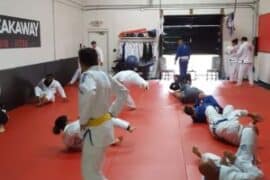Understanding Australian and US Shoe Sizes for Your Little Ones
Hello Lovely Parents!
Ah, children and their ever-growing feet—such a delightful yet challenging aspect of parenting, isn’t it? Just when you’ve bought the cutest pair of shoes for your little munchkin, whoosh, they seem to outgrow them overnight. And if that’s not tricky enough, trying to decipher the difference between Australian and US shoe sizes can feel like you are decoding an ancient, mysterious map.
But fear not! We’re here to sprinkle some pixie dust on this seemingly daunting task. Our ultimate guide is designed to demystify the seemingly complex world of kids’ shoe size conversions between Australia and the United States. So, let’s hop, skip, and jump into the joyful journey of finding the perfect fit for those precious little feet!
Why Shoe Size Conversion Matters
Before we take a deep dive into the numbers and charts, let’s understand why knowing the correct size conversion is essential for your child’s comfort and foot health. Wearing well-fitting shoes is incredibly important for children as they’re constantly on the go, exploring and engaging with the world around them. Incorrect shoe sizing can lead to blisters, discomfort, and even longer-term foot development issues.
Now, as each country follows its sizing system, an Australian size might not correspond directly to a US size. This is especially true for kids’ shoes, where even a slight variation can mean the difference between a comfy pair of shoes and ones that are too tight or too loose.
A Quick Peek at Size Conversion Between Australia and the US
To give you a quick understanding without getting too technical from the get-go, children’s shoe sizes in Australia are generally about two sizes smaller than those in the US. For example, if your kiddo is a size 8 in Australian measurements, they’ll likely be a size 10 in US kid’s shoes.
Here’s a simple rule of thumb: just add two sizes to convert an Australian size to American for children’s shoes. And when converting back? Subtract two sizes from the US measurement to find the Australian size. Easy-peasy, right? But, keep in mind that this rule doesn’t account for half sizes or brand-specific differences, which is why we will be going into more detail further along in our guide.
Let’s Get Specific: The Conversion Chart
All set to shop for those adorable sneakers or the perfect dress shoes for a special occasion? Your go-to helper in this shopping adventure is the conversion chart. We’ll provide a detailed chart that you can bookmark or print out for easy reference. This will be your trusty sidekick in ensuring you’re selecting the right shoes whether you’re shopping online, browsing international brands, or scoring cute shoes while on holiday in the US or Australia.
Before we jump into the intricacies of the chart, remember to consider your child’s foot width. Some brands offer wide, standard, or narrow options, so knowing the width of your child’s foot is just as important as knowing the length when making conversions.
Also, here’s a pro-tip: always measure your child’s feet every time you’re shopping for a new pair of shoes! Children’s feet grow at such a rapid rate that their previous size might not be a reliable reference after a few months.
Now that we’ve set the foundation with the basics of size conversion and the importance of an accurate fit, we’re going to guide you through the nitty-gritty details. Whether it’s discovering how to properly measure those twinkle toes, understanding the difference between shoe size standards, or even learning about the nuances of various shoe types (because yup, a ballet flat and a chunky boot may not be the same size), we’re here to make sure you’ve got all the information you need.
Stick with us as we lead you through the delightful world of Australian and US shoe sizes for your ever-so-sprightly kiddos. And remember, keep those little feet happy, and you’ve got a happy little explorer ready to conquer the world—one comfortable step at a time!

Five Things Every Parent Should Know When Preparing for Australian and US Shoe Sizes
Before you embark on your shoe shopping adventure, here are five golden nuggets of wisdom to keep in your parental toolkit:
- Always Measure: Children’s feet can grow unpredictably. Measure both feet for length and width every few months, as one foot may be larger than the other. Buying the correct size ensures comfort and proper foot development.
- Understand the Scale: Australian kids’ sizes are approximately two sizes smaller than their US counterparts. However, this may vary based on the brand and style of shoe, so use this as a starting point.
- Check for Growing Room: Look for about a thumb’s width of space between your child’s longest toe and the end of the shoe to allow for some growing room without being too large and causing tripping hazards.
- The Importance of Trying On: If possible, have your child try on shoes, especially if you’re switching between brands or styles. Comfort is king, and there’s no substitute for a real fit-check.
- Seasonal Considerations: Remember that feet can swell in hot weather. Consider this when buying shoes that might be worn during warmer times, like summer sandals or sports shoes for outdoor activities.
Now let’s draw back the curtains and showcase a detailed size conversion chart that will be your ultimate reference. Pair this with the above tips, and voilà! You’re all set to navigate the shoe aisles like a pro.
The Detailed Australian and US Kids’ Shoe Size Conversion Chart
Here’s a handy conversion chart to save to your phone or print out:
| Australian Size | US Size (Approximate) |
|---|---|
| 4 | 6 |
| 5 | 7 |
| 6 | 8 |
| 7 | 9 |
| 8 | 10 |
| 9 | 11 |
| 10 | 12 |
| 11 | 13 |
| 12 | 1 (Youth) |
| 13 | 2 (Youth) |
| 1 (Youth) | 3 (Youth) |
| 2 (Youth) | 4 (Youth) |
| 3 (Youth) | 5 (Youth) |
Note: The above chart represents a general guideline. For the most accurate fitting, refer to each manufacturer’s specific size chart and fitting advice.
Getting the Right Fit: Measuring Your Child’s Feet
Here’s how you can measure your child’s feet at home:
- Have your child stand on a blank piece of paper wearing the socks they will wear with the new shoes.
- Mark the longest part of their foot (heel to toe) and the widest part of their foot (for width) on the paper.
- Use a ruler to measure from the edge of the paper to the mark for length.
- For width, use any standard width measuring chart or device you might have on hand.
- Compare these measurements to an online sizing chart or take them to the store with you.
Lastly, always remember that the comfort of your child’s shoes is paramount. Be patient and don’t worry if you have to try a few different sizes to get it just right—hearing the giggle of your little one as they scamper around in perfectly fitting shoes is the best reward for your dedication. Happy shoe shopping!
For more great articles please see here. For more information see here
Disclaimer
The articles available via our website provide general information only and we strongly urge readers to exercise caution and conduct their own thorough research and fact-checking. The information presented should not be taken as absolute truth, and, to the maximum extent permitted by law, we will not be held liable for any inaccuracies or errors in the content. It is essential for individuals to independently verify and validate the information before making any decisions or taking any actions based on the articles.




